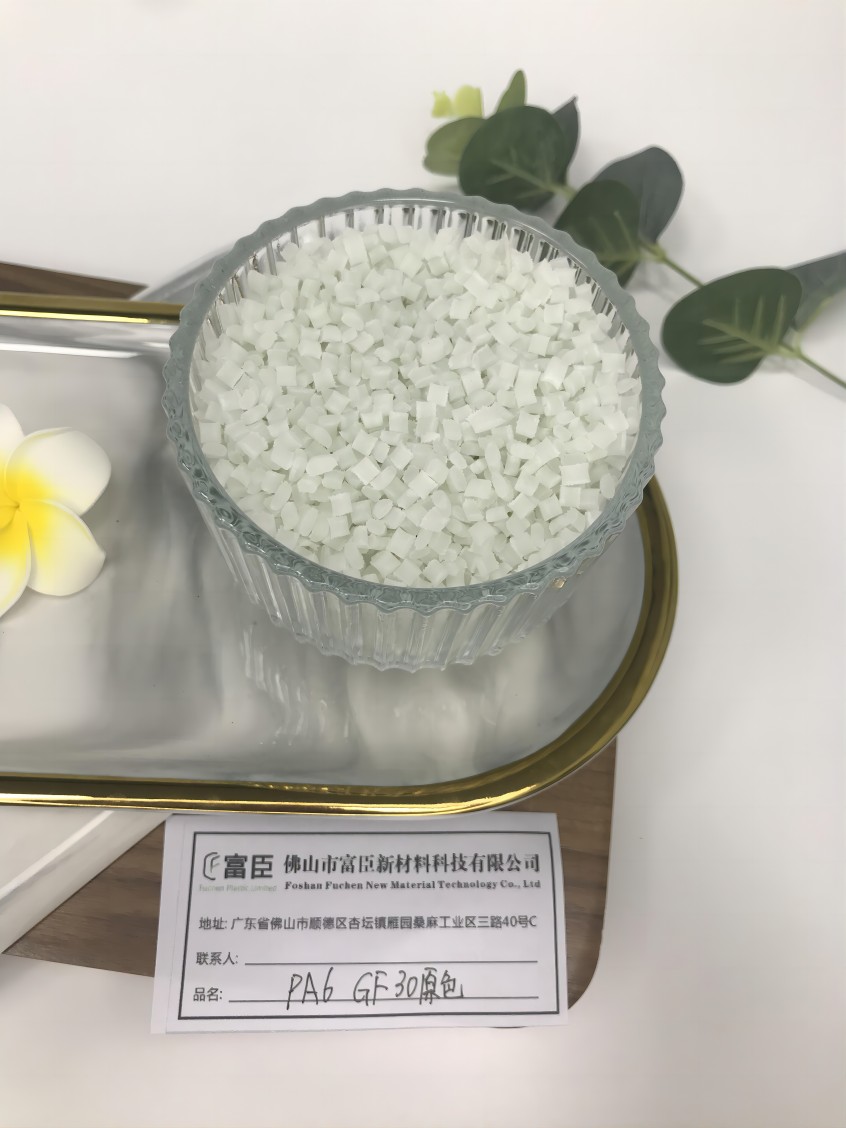Introduction de PA6 Point de fusion
Polyamide 6Le PA6, communément appelé PA6, est un important thermoplastique technique connu pour ses propriétés mécaniques exceptionnelles, sa résistance chimique et sa stabilité thermique. L'un des principaux attributs qui définissent la polyvalence du PA6 et son adéquation à diverses applications est son point de fusion. Cet article examine l'importance du point de fusion du PA6, son influence sur les propriétés du polymère et ses implications pour les applications pratiques.
Importance du point de fusion du PA6
Définition du point de fusion
Le point de fusion du PA6 se situe entre 220 et 230°C, ce qui est relativement élevé par rapport à d'autres thermoplastiques. Ce point de fusion élevé est attribué aux fortes forces intermoléculaires, principalement les liaisons hydrogène, entre les chaînes de polymères. Il est essentiel de comprendre ce point de fusion, car il détermine l'aptitude à la transformation, la cristallinité et la stabilité thermique du PA6.
Aptitude à la transformation du PA6
Défis en matière de traitement
Le point de fusion élevé du PA6 a un impact significatif sur son aptitude à la transformation. Plus le point de fusion augmente, plus la transformation du polymère devient difficile. Les méthodes traditionnelles telles que le moulage par injection et l'extrusion se heurtent à des difficultés dues aux températures élevées requises, qui peuvent entraîner une dégradation thermique, une décoloration et un gauchissement du produit final. Pour atténuer ces problèmes, le PA6 est souvent composé d'additifs tels que des lubrifiants, des agents de nucléation et des stabilisateurs afin d'améliorer son aptitude à la transformation.
Cristallinité et PA6
Impact sur la structure
Le point de fusion du PA6 influe également sur sa cristallinité. En tant que polymère semi-cristallin, le PA6 contient à la fois des régions cristallines et amorphes, avec un niveau de cristallinité d'environ 50%, ce qui est élevé par rapport à d'autres thermoplastiques. Ce degré élevé de cristallinité, assuré par le point de fusion élevé, se traduit par des propriétés mécaniques supérieures telles que la résistance, la rigidité et la ténacité. En outre, la cristallinité élevée contribue à l'excellente résistance chimique et à la stabilité thermique du PA6.
Stabilité thermique du PA6
Endurance à des températures élevées
Le point de fusion du PA6 lui confère une remarquable stabilité thermique. Cette stabilité est cruciale car elle empêche le polymère de se dégrader pendant le traitement à des températures élevées, ce qui le rend adapté aux applications qui exigent une résistance à la chaleur. La stabilité thermique permet également au PA6 de conserver ses propriétés dans des conditions de haute température, ce qui le rend idéal pour une utilisation dans les secteurs de l'automobile, de l'électricité et de l'électronique.
Applications du PA6
Aptitude aux utilisations à haute température
Le point de fusion élevé du PA6 permet de l'utiliser dans des applications nécessitant des températures élevées. Il s'agit notamment de pièces automobiles sous le capot, de connecteurs électriques et de conduites d'eau chaude. Le point de fusion élevé offre également une excellente résistance au fluage, ce qui est essentiel pour les applications qui exigent des performances à long terme à des températures élevées.
Conclusion sur le point de fusion du PA6
En conclusion, le point de fusion du PA6 est une propriété fondamentale qui influence sa transformabilité, sa cristallinité et sa stabilité thermique. Le point de fusion élevé garantit que le PA6 convient à une série d'applications exigeantes, en particulier celles qui impliquent des températures élevées. Il est essentiel de comprendre l'importance du point de fusion du PA6 pour sélectionner le bon polymère afin de garantir des performances optimales dans diverses applications industrielles.
FAQ : Comprendre l'importance du point de fusion du PA6
1) Qu'est-ce que le PA6 ?
Le polyamide 6 (PA6) est un thermoplastique technique largement utilisé, connu pour ses excellentes propriétés mécaniques, sa résistance chimique et sa stabilité thermique.
2) Pourquoi le point de fusion du PA6 est-il important ?
Le point de fusion du PA6, qui se situe aux alentours de 220-230°C, est crucial car il détermine l'aptitude à la transformation, la cristallinité et la stabilité thermique du polymère, ce qui influe sur son adéquation à diverses applications.
3. Comment le point de fusion du PA6 affecte-t-il l'aptitude à la transformation ?
Le point de fusion élevé du PA6 rend plus difficile sa transformation par des méthodes conventionnelles telles que le moulage par injection et l'extrusion en raison des températures élevées requises, qui peuvent entraîner une dégradation thermique, une décoloration et un gauchissement. Des additifs sont souvent utilisés pour améliorer l'aptitude à la transformation.
4. Quel est l'impact du point de fusion du PA6 sur sa cristallinité ?
Le point de fusion élevé garantit un haut degré de cristallinité (environ 50%), qui améliore les propriétés mécaniques du PA6, telles que la résistance, la rigidité et la ténacité, et contribue à son excellente résistance chimique et à sa stabilité thermique.
5.Comment le point de fusion du PA6 influence-t-il la stabilité thermique du PA6 ?
Le point de fusion élevé du PA6 lui confère une excellente stabilité thermique, ce qui empêche sa dégradation aux températures de traitement et lui permet de résister à des températures élevées pendant son utilisation, ce qui le rend adapté aux applications exigeantes.
6. Quelles sont les applications typiques du nylon 6 en raison de son point de fusion élevé ?
Le PA6 est idéal pour les applications à haute température telles que les pièces automobiles sous le capot, les connecteurs électriques et les conduites d'eau chaude. Son point de fusion élevé lui confère également une excellente résistance au fluage pour des performances à long terme à des températures élevées.
7. Pourquoi est-il important de comprendre la signification du point de fusion du PA6 ?
R7 : Il est essentiel de connaître le point de fusion du PA6 pour sélectionner le polymère approprié à des applications spécifiques, afin de s'assurer que le matériau possède les propriétés requises pour des performances optimales dans diverses industries, en particulier celles qui exigent une résistance aux températures élevées.

